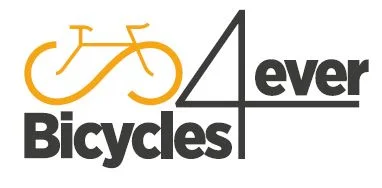Heart Rate Vs Power (& what’s best for training) with Road Cycling Academy
Source: Road Cycling Academy Youtube Channel: Heart Rate Vs Power (& what’s best for training)
Video Heart Rate Vs Power (& what’s best for training) with Road Cycling Academy
Video Heart Rate Vs Power (& what’s best for training) with Road Cycling Academy YouTube Channel.
Heart Rate Vs Power (& what’s best for training)
The Power of Power and Heart Rate in Road Cycling
In the world of Road Cycling Academy, there has long been a debate about the efficacy of using power versus heart rate as a measure of performance and progress. This debate is reminiscent of the rim versus disc brake debate and has sparked many conversations among experienced cyclists and beginners alike. But what if the answer isn’t one or the other, but a combination of both? In this article, we will discuss the pros and cons of both power and heart rate, and why using them together can provide the most comprehensive understanding of a cyclist’s training and performance.
The Pros of Power
First, let’s explore the pros of power as a measurement tool in road cycling. Power is an instantaneous measure of a cyclist’s actual effort. Every second, a cyclist can gauge exactly how much power they are putting out, providing real-time feedback on their performance. This makes power a highly specific and accurate measure of effort, akin to using different weights in the gym to progressively challenge and build strength. For beginners, power offers an easy and precise way to target specific power outputs and training zones. It serves as an external measurement that is not influenced by internal factors such as fatigue or stress, making it a valuable tool for novice cyclists.
However, power does come with its drawbacks. It is a relatively expensive measurement tool, and the focus on numbers can lead some cyclists to become overly fixated on hitting specific power targets, potentially hindering their overall cycling experience. Additionally, constantly monitoring and adhering to power numbers may restrict a cyclist from pushing themselves beyond their perceived limits and can lead to a lack of adaptability in training.
The Pros of Heart Rate
Heart rate serves as an internal measurement of a cyclist’s efforts, providing insights into how the body is responding to external exertion. It can indicate fatigue, illness, and overall physiological adaptability. Heart rate is a cost-effective and easily accessible measurement tool, making it ideal for beginners and experienced cyclists alike. Over time, cyclists can track changes in heart rate at specific power outputs, providing a nuanced understanding of their training adaptations.
However, heart rate also has its limitations. It is slow to respond to changes in effort, making it less precise for immediate performance assessments. This delay in response can lead cyclists to work at intensity levels that are higher than intended, resulting in suboptimal training. Heart rate also varies significantly based on external factors such as sleep, stress, and fatigue, making it a less reliable and consistent measure without considering contextual elements.
The Importance of Using Both
While both power and heart rate have their individual strengths and weaknesses, the most comprehensive approach to measuring training and performance in road cycling involves using both measures. By integrating power and heart rate data, cyclists can gain a more complete understanding of their efforts and physiological responses. Comparing heart rate trends to power outputs over time can provide valuable insights into a cyclist’s adaptation and fitness progress.
For instance, a decrease in average heart rate at a specific power output during endurance training can indicate improved cardiovascular efficiency and endurance. Similarly, noticing a reduction in heart rate drift during sustained efforts can signal increased aerobic fitness and overall cycling performance. Without the combined use of power and heart rate data, such nuances in training adaptations may go unnoticed.
Heart Rate Vs Power
In conclusion, power and heart rate are not mutually exclusive in road cycling. Both measures offer unique insights into a cyclist’s performance and training adaptations. By embracing a dual approach that integrates power and heart rate data, cyclists can make more informed decisions about training, monitor physiological adaptations, and ensure a balanced and effective training regimen. The power versus heart rate debate may continue, but the real power lies in leveraging both measures to enhance cycling performance and overall fitness.
The opinions expressed in this space are the sole responsibility of the YouTube Channel Road Cycling Academy and do not necessarily represent the views of CicloNews.

